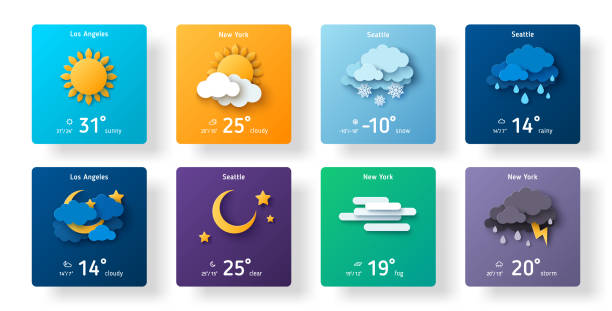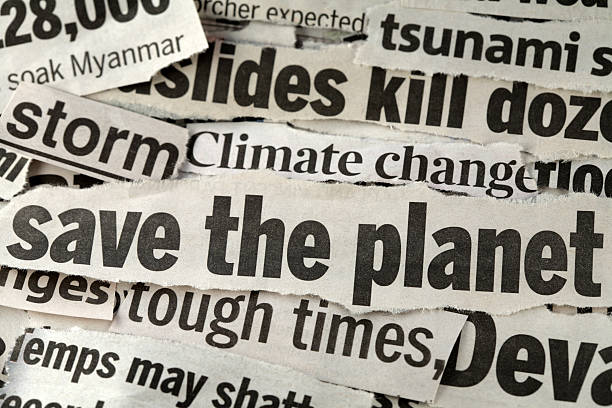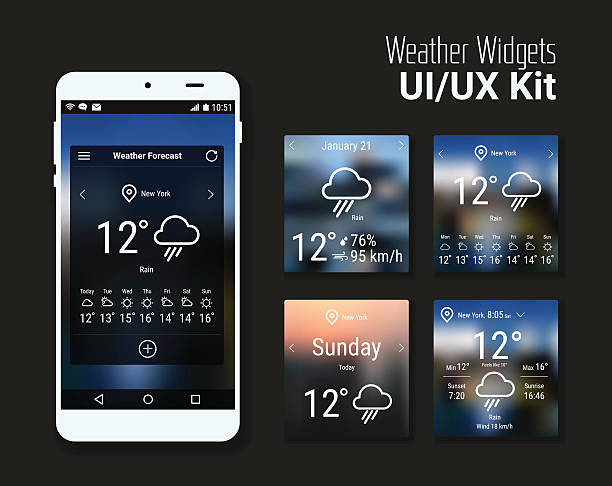Talking About The Weather In English (11 Steps You Need To Know)
Talking about the weather in English may seem like a simple and mundane endeavor, yet it’s a conversation topic that transcends linguistic borders and cultural boundaries.
It’s an art form, an everyday ritual, and a universal connector. Weather talk is the small talk that opens doors to more profound discussions, the social glue that bonds strangers, and the palette on which we paint the atmosphere of our lives.
It’s not just about knowing if it’s going to rain or shine; it’s a reflection of our shared experiences, our moods, and even our cultural idiosyncrasies.
In this exploration of the significance of discussing the weather in English, we’ll delve into its role as an icebreaker, a cultural touchstone, and a canvas for vivid language.
We’ll uncover the depth and breadth of weather vocabulary, unravel its idiomatic expressions, and navigate its place in travel, work, and personal conversations.
Beyond mere meteorology, discussing the weather in English is an entry point into the nuances of human communication, a treasure trove of linguistic richness, and a mirror to our ever-changing world.
Talking About The Weather In English
Sure, here is a step-by-step process for talking about the weather in English:
Greeting
Begin by greeting the person you’re talking to with a friendly “Hello” or “Hi.”
Initiate the Topic
Transition into the weather conversation by saying something like “How’s the weather today?” or “Have you seen the weather outside?”
Observe
Share your observation about the current weather. For example, “It’s a beautiful day today,” or “It’s quite chilly outside.”
Temperature
Mention the temperature, if known or relevant. You can say, “It’s about 25 degrees Celsius,” or “I heard it’s going to be in the 80s today.”
Weather Conditions
Describe the current weather conditions. You can use phrases like “It’s sunny and clear,” “It’s overcast,” or “It’s raining.”
Personal Opinion
Share your opinion or how you feel about the weather. For instance, “I love sunny days like this,” or “I wish it were a bit warmer.”
Ask for Their Input
Engage the other person by asking them how they feel about the weather or if they have any plans related to it. You could ask, “What do you think of this weather?” or “Do you have any outdoor plans today?”
Discuss Plans
If relevant, you can talk about any plans or activities you or the other person have based on the weather. For example, “I’m thinking of going for a walk in the park,” or “I might stay in and watch movies because of the rain.”
Weather Forecast
If you want to continue the conversation, you can check the weather forecast on your phone or another device and share any upcoming weather predictions.
Closing
To wrap up the conversation, you can say something like, “Well, I hope the weather stays nice,” or “Stay dry if you’re heading out in the rain.”
Goodbye
Finally, say goodbye or transition to another topic if the weather discussion has run its course.
Remember to be polite, considerate of the other person’s views, and responsive to the direction the conversation takes. Talking about the weather is a common icebreaker and a way to connect with others, so be open and friendly in your approach.

Why Talking About the Weather Matters
Discussing the weather may seem like a trivial pursuit, a mundane topic that merely fills the silence in our conversations.
However, beneath its seemingly banal surface lies a remarkable key to the human experience. It’s a universal language, an emotional barometer, and an unassuming entryway into understanding one another.
Talking about the weather isn’t just about the forecast; it’s about our shared existence on this ever-changing planet.
It’s the subtle art of acknowledging the winds of change that blow through our lives and the soothing rain that washes away our worries.
It’s a topic that unites, empathizes, and connects us in ways we often overlook. So, next time you engage in a weather-related chat, remember, it’s not just small talk; it’s a powerful reminder of our interconnectedness in this ever-shifting world.
Icebreaker and conversation starter
Icebreakers and conversation starters are the social lubricants of human interaction, smoothing the often awkward path of initial contact.
They’re the verbal handshakes that help us bridge the gap between strangers or even acquaintances, creating a comfortable space for dialogue to unfold.
These ingenious little phrases or questions cut through the initial tension, putting people at ease and allowing them to engage naturally.
Whether it’s asking about the weather, inquiring about someone’s day, or sharing a light anecdote, icebreakers and conversation starters play a crucial role in building rapport and setting the stage for more profound connections.
In a world filled with distractions, they provide a valuable gateway to meaningful and authentic communication, often turning strangers into friends and forging connections that can last a lifetime.
Weather Vocabulary
Weather vocabulary is like a treasure chest of words and phrases that unlocks the secrets of our atmosphere. From the whimsical “petrichor,” the earthy scent after rain, to the formidable “haboob,” a massive sandstorm, these words paint vivid pictures of the world outside our windows.
Weather vocabulary isn’t just about small talk; it’s a linguistic adventure. It allows us to capture the essence of nature’s moods, from the ethereal beauty of a “halo” encircling the sun to the tempestuous roar of “thunderclaps.”
As you delve into the lexicon of weather, you’ll discover a language rich in metaphor and wonder, a realm where words become raindrops, and phrases evoke the stormy symphonies of our ever-changing skies.
It’s a world where linguistics and meteorology unite to describe the artistry of the elements, offering endless opportunities for expression and poetic conversation.
Common weather-related words and phrases
Common weather-related words and phrases are the foundation of our daily meteorological discussions, serving as the linguistic bridge between our observations and conversations.
These familiar terms, like “sunny,” “cloudy,” or “windy,” provide us with a shared vocabulary to convey the conditions outside.
Yet, it goes beyond the basics; we have a wealth of descriptors at our disposal, from “scorching” to “drizzling,” allowing us to paint precise pictures of the atmosphere.
Phrases such as “partly cloudy,” “chance of showers,” or “heatwave” encapsulate complex weather scenarios in just a few words, making them essential in our ability to plan, express, and navigate the world around us.
They are the daily building blocks of meteorological language, making our conversations both accessible and vivid, regardless of whether we’re discussing a spontaneous rain shower or the prospect of a spectacular sunset.

Small Talk and Social Etiquette
Small talk is the social glue that holds the fabric of our interactions together, and it’s where connections are often subtly woven.
It’s like a delicate dance, a universal language that transcends borders and backgrounds, forging bonds one sentence at a time.
Small talk isn’t just about discussing the mundane; it’s an art form that embraces the beauty of the ordinary. It’s the friendly nod that greets a neighbor, the casual chat in an elevator, and the warm banter over a cup of coffee.
It’s the power to turn strangers into friends, to make people feel seen and heard, and to create bridges of understanding where there were once walls of indifference.
So, the next time you find yourself in the gentle embrace of small talk, remember, it’s not mere chatter; it’s the alchemy of human connection, the opening act of deeper conversations, and the heartbeat of our social world.
Politeness and cultural norms
Politeness and cultural norms are the silent architects of harmonious interactions in our diverse and interconnected world.
They lay the foundation for respect, empathy, and understanding between individuals from different backgrounds and belief systems.
Politeness, with its rituals of saying “please” and “thank you,” and observing personal space, becomes the unspoken language of respect.
However, what constitutes politeness varies greatly across cultures. The subtle nuances of bowing in Japan, the warm cheek-kissing in some European countries, or the firm handshake in the United States, all exemplify how cultural norms dictate appropriate behaviors.
These norms guide our gestures, our speech, and even our taboos, creating a mosaic of customs that enrich our global tapestry.
So, when engaging in cross-cultural interactions, the delicate dance of politeness and respect becomes an essential compass, helping us navigate the intricate paths of human connection while honoring the unique norms of each culture.
Weather in Travel and Tourism
Weather in travel and tourism is the whimsical conductor of our wanderlust symphony. It’s the unseen scriptwriter of our adventures, capable of turning a destination into a sun-kissed paradise or a winter wonderland.
Travelers know that the sky’s palette can transform a mere trip into an unforgettable journey. The sapphire skies of a Mediterranean summer, the enchanting mist that shrouds ancient temples in Southeast Asia, or the snowy slopes of the Alps, each weather scenario invites us to experience a place in a completely different light, quite literally.
Weather, in the realm of travel, is both the catalyst for our explorations and the ever-present companion in our global quest for memories. It’s the thrill of packing for an unknown climate, the surprise of a sudden rain shower in a tropical paradise, and the warmth of a cozy fireside chat in a mountain lodge.
So, as we embark on our travel adventures, we should remember that, in this grand play of globetrotting, weather takes the stage and sets the scene for the travel stories we’ll tell for a lifetime.

Examples of weather idioms
Weather idioms are like little meteorological mysteries hidden within the fabric of our language. They infuse our conversations with vivid imagery, lending color and depth to our expressions.
From “under the weather” when we’re feeling unwell, to “raining cats and dogs” during a torrential downpour, these idioms paint a picture even a weather app can’t capture.
We say someone is “on cloud nine” when they’re exceptionally happy, and “weather the storm” when facing challenges with resilience.
These idioms link our emotions and experiences to the ever-changing climate, offering a fascinating glimpse into the poetic way language evolves to encapsulate the human condition.
So, the next time you hear or use a weather idiom, remember that it’s more than just words; it’s a tiny piece of meteorological magic in the vast tapestry of our expressions.
Weather-Related Conversations in the Workplace
Weather-related conversations in the workplace are like the serendipitous weather itself, unpredictable yet surprisingly impactful.
It’s the rare moment when water cooler chatter transcends the mundane and transforms into a shared meteorological adventure.
You may find yourself discussing a recent snowstorm that united colleagues in a communal shiver or exchanging umbrella recommendations during a sudden downpour.
Weather talk at the office isn’t just a casual pastime; it’s the humanizing force that bridges hierarchical gaps, sparks unexpected camaraderie, and offers a glimpse into the shared experiences beyond spreadsheets and meetings.
It’s the small talk that transcends cubicles, creating a climate of connection amidst the daily grind, reminding us that even in the world of corporate hustle, we’re all just under the same weather, seeking warmth in the human connection of an unexpected rain dance.

Discussing weather at the office
Discussing the weather at the office is like an unsung symphony in the background of our professional lives. It’s the universal conversation starter, a subtle yet effective way to connect with coworkers and break the ice in a world of deadlines and emails.
From comments about the unrelenting heatwave that keeps the office thermostat in constant debate to playful banter about the impending snowstorm that stirs anticipation, weather talk transcends the confines of our cubicles.
It offers a shared, relatable topic that humanizes the work environment, forging bonds and fostering a sense of camaraderie.
These casual exchanges about weather may appear trivial, but they serve as a reminder that even in the hustle and bustle of the corporate world, we are all under the same atmospheric influence, finding connection in the shared experience of weather’s capriciousness.
Weather and Emotional Associations
Weather is more than just a meteorological phenomenon; it’s an atmospheric storyteller that weaves our emotions into the very fabric of the sky.
It transforms the mundane act of looking out the window into a journey through the heart’s landscapes. The crisp, invigorating touch of a brisk autumn breeze can summon nostalgia and introspection, while the arrival of a warm spring day might awaken a sense of renewal and hope.
On a stormy afternoon, raindrops on the windowpane may evoke melancholy, and a radiant sunrise could inspire boundless joy.
Weather becomes a reflection of our inner worlds, a silent confidant to our moods, and a poetic backdrop to our memories.
It reminds us that, in a world of fleeting moments and changing skies, our emotions are as transient and beautiful as the weather itself.
How weather can influence mood and emotions
Weather has a remarkable capacity to act as a silent puppeteer of our moods and emotions, orchestrating the ebb and flow of our internal states.
The golden rays of a sunny day often awaken feelings of happiness and optimism, coaxing smiles and a general sense of well-being.
On the flip side, the gloom of a rainy afternoon can cast a shadow on our spirits, invoking contemplation or melancholy.
The invigorating freshness of a clear, crisp day might infuse us with energy and motivation, while the heaviness of a gray, overcast sky could elicit a sense of introspection.
These emotional shifts in response to weather are deeply ingrained in our psyche, reflecting the interconnectedness between the external world and our internal landscape.
Weather’s influence on our emotions serves as a reminder of our vulnerability and adaptability to the ever-changing conditions of our surroundings, emphasizing that our emotional well-being is intricately woven into the very fabric of nature.

The Impact of Climate Change
The impact of climate change is a relentless and unforgiving drama unfolding on the global stage. It’s a narrative of melting glaciers, scorching wildfires, and rising seas that demands our immediate attention.
But it’s not just about the environment; it’s a profound examination of our values, ethics, and responsibility to the planet we call home.
Climate change is the looming protagonist, both villain and hero in this story. It’s pushing humanity to the brink, yet also beckoning us to unite in unprecedented ways.
It’s an epic tale of adaptation, innovation, and the unwavering spirit of those determined to rewrite the ending.
The impact of climate change is a call to action, a wake-up call to reshape our relationship with the Earth and pave a path towards a sustainable, harmonious future.
In this narrative, the climax is still unwritten, and every choice we make is a plot twist that will determine the fate of our world.
Conversations about climate and environmental concerns
Conversations about climate and environmental concerns are not merely discussions; they are rallying cries for a planet in peril.
They represent our collective conscience speaking out against the looming specter of ecological collapse. These dialogues carry the weight of responsibility and the urgency of a ticking clock.
They force us to confront the inconvenient truths of habitat loss, extreme weather events, and the harsh reality of species on the brink of extinction.
Yet, within these conversations, there’s a glimmer of hope, a rallying call for sustainable practices, renewable energy, and conservation efforts that may avert disaster.
They’re a call to action, a reminder that we have a shared duty to protect the world we inhabit and to safeguard it for generations yet unborn.
In these discussions, we find the blueprint for a greener, more compassionate future, where our voices become the catalyst for positive change and the armor against environmental degradation.
Preparing for Extreme Weather Events
Preparing for extreme weather events is like choreographing a symphony of survival. It’s a stark reminder of nature’s unpredictability, a humbling recognition that we are mere players in her grand production.
From stockpiling essentials in the face of a blizzard’s impending wrath to evacuating coastal towns ahead of an approaching hurricane, these preparations are a testament to human resilience and resourcefulness.
In these moments, the mundane is transformed into the extraordinary, as we harness our ingenuity to protect life, property, and community.
It’s a dance with the elements, a battle against the tempest, where grit and cooperation become our most potent instruments.
So, as we brace ourselves for the tempest’s fury, we find strength in unity and the reassuring cadence of preparedness—a reminder that even in the storm’s darkest hours, humanity’s indomitable spirit shines as a beacon of hope and resilience.
Discussing weather emergencies and natural disasters
Discussing weather emergencies and natural disasters is a sobering yet essential dialogue that underscores the fragility of our human existence in the face of Mother Nature’s raw power.
These conversations are the alarm bells that awaken communities to the impending storms, wildfires, or seismic shifts that threaten lives and livelihoods.
They are the epicenter of resilience, where emergency plans are meticulously laid, evacuation routes are mapped, and critical information is disseminated.
But beyond logistics, these conversations invoke solidarity and compassion, as communities come together to support one another during these trying times.
They’re a stark reminder that in the face of nature’s fury, humanity’s response is a testament to our collective strength and determination to weather the storm, rebuild, and emerge stronger from the ashes.
In discussing these emergencies, we pay homage to the indomitable human spirit, ever-adapting, ever-surviving, in the tumultuous theater of our planet.
Weather-Related Technology and Apps
Weather-related technology and apps are like the magical looking glass into the whims of the skies, offering us a virtual meteorological adventure at our fingertips.
They are our modern-day oracles, divining the atmospheric secrets and translating them into user-friendly forecasts.
These digital marvels provide not only accurate weather predictions but also a captivating journey through weather patterns, wind currents, and temperature trends.
With the swipe of a screen, we can track hurricanes in real-time, gaze at satellite images of cloud formations, and even experience the world’s most extreme climates from the comfort of our homes.
Weather apps are not just practical tools; they’re a gateway to meteorological fascination and a testament to the extraordinary fusion of science and technology.
They remind us that in an age of information, even the most complex natural phenomena can be deciphered and appreciated with a simple tap on a smartphone.
Discussing weather forecasting and technology
Discussing weather forecasting and technology unveils the awe-inspiring fusion of science and innovation. It’s a dialogue that propels us into the realm of meteorological marvels, where satellites, supercomputers, and cutting-edge models collaborate to decode the enigmatic language of the skies.
In these conversations, we unveil the intricate process of predicting weather patterns, from tracking atmospheric pressure systems to analyzing temperature fluctuations.
It’s a narrative of constant improvement, where technology’s relentless evolution has exponentially enhanced the accuracy and accessibility of weather forecasts.
Through these discussions, we gain insight into the meteorologists’ craft and their tireless commitment to providing us with valuable forecasts that shape our daily lives and decisions.
Weather forecasting technology is not just a matter of data; it’s a testament to human ingenuity and the unending quest to comprehend and harness the formidable forces of nature.
Cross-Cultural Perspectives
Cross-cultural perspectives are the kaleidoscopic windows to a world woven from a myriad of human experiences, traditions, and worldviews.
It’s an invitation to step out of our cultural comfort zones and into a universe of diversity and discovery. In these dialogues, we uncover the vibrant tapestry of customs, beliefs, and values that shape the human mosaic.
Cross-cultural perspectives are more than just conversations; they’re transformative journeys that challenge our assumptions, broaden our horizons, and lead us to the heart of empathy and understanding.
They’re the mirror that reflects our common humanity, reminding us that beneath the surface of our differences lies a shared human essence that binds us all.
In these discussions, we navigate the delicate bridges between cultures and forge connections that transcend borders, highlighting the beauty of a world where every perspective is a brushstroke, contributing to the vibrant portrait of our global tapestry.
Differences in weather talk across cultures
Differences in weather talk across cultures unveil the fascinating diversity in the ways we perceive and converse about our shared atmospheric experiences.
While some cultures may engage in weather small talk as a social lubricant, others view it as a profound symbol of their connection to the natural world.
For some, weather descriptions may be more vivid and poetic, painting the environment with rich imagery and emotional resonance.
In contrast, other cultures may employ a more straightforward and pragmatic approach, discussing weather purely for its practical implications.
These variations reflect not just linguistic differences but also the unique relationships each culture has with the environment, revealing how our daily interactions with the weather mirror our deeply rooted values, traditions, and historical contexts.
These distinctions enrich our global conversation, highlighting the beauty of a world where even the simplest meteorological exchange can be a window into the rich tapestry of diverse human experiences.
Frequently asked questions about talking about the weather in English
Is it okay to start a conversation with a stranger by discussing the weather?
Yes, discussing the weather is a common and socially acceptable way to initiate a conversation with strangers. It’s a universal topic that can help break the ice.
What are some creative ways to describe the weather beyond the usual terms like “sunny” or “rainy”?
You can use vivid language to describe the weather, such as “The sun is blazing in the sky,” “It’s pouring cats and dogs,” or “The air feels crisp and invigorating.”
How can I use weather-related idioms in conversation?
Incorporate idiomatic expressions like “Under the weather” (feeling unwell), “Weather the storm” (deal with difficulties), or “Chasing rainbows” (pursuing unrealistic goals) to add depth to your conversations.
What are some non-verbal cues that can complement a weather-related conversation?
Non-verbal cues like smiling when talking about pleasant weather or miming rain with your fingers during a discussion about rainfall can enhance your communication.
How can I segue from a weather conversation to deeper topics in a natural way?
You can transition by saying something like, “Speaking of sunny days, have you been on any exciting outdoor adventures recently?” This links the weather discussion to broader topics.
What are some culturally sensitive ways to discuss the weather with people from different regions and backgrounds?
Be aware of cultural differences and avoid making assumptions. Ask open-ended questions like “How do you feel about this weather?” to allow them to share their perspective.
Can discussing the weather be used as a metaphor in more profound conversations?
Absolutely, weather-related metaphors can be used to express emotions or life situations. For example, “I feel like I’m in a constant thunderstorm with all these deadlines.”
Is it appropriate to bring up climate change when discussing the weather, or should I avoid sensitive topics?
Climate change is a critical issue, but it’s advisable to gauge the other person’s interest before discussing it. If they are open to the topic, you can share your concerns or ask for their thoughts.
How do I keep a weather conversation from becoming repetitive or boring?
You can keep it engaging by discussing weather-related experiences, sharing weather-related anecdotes, or asking for the other person’s favorite weather-related memories.
What are some conversation starters related to the weather beyond the typical “How’s the weather today?”
Try unique openers like “Have you ever experienced extreme weather conditions?” or “What’s your ideal weather for a perfect day?”
Remember that the key to enjoyable weather-related conversations is to be mindful of the other person’s interest, adapt to the context, and use creativity to make the discussion engaging and memorable.
Conclusion
In conclusion, talking about the weather in English is far from a trivial or mundane pursuit; it’s a fundamental and intricate aspect of human communication.
It’s a conversation starter that transcends cultures and creates connections, an icebreaker that eases us into deeper discussions, and a universal language that unites us in the ebb and flow of our shared experiences.
Weather talk is a lens through which we observe the world, and it’s a reminder of the ways in which nature impacts our daily lives and emotions.
From the idioms that pepper our language to the cultural nuances that color our conversations, weather holds a special place in our linguistic and cultural landscape.
It influences our travel plans, our workplace interactions, and even our understanding of climate change and environmental issues.
So, the next time you find yourself discussing the weather in English, remember that it’s not just a casual exchange; it’s a doorway into the intricate web of human connection, a rich tapestry of language, and a reflection of our shared human experience.






